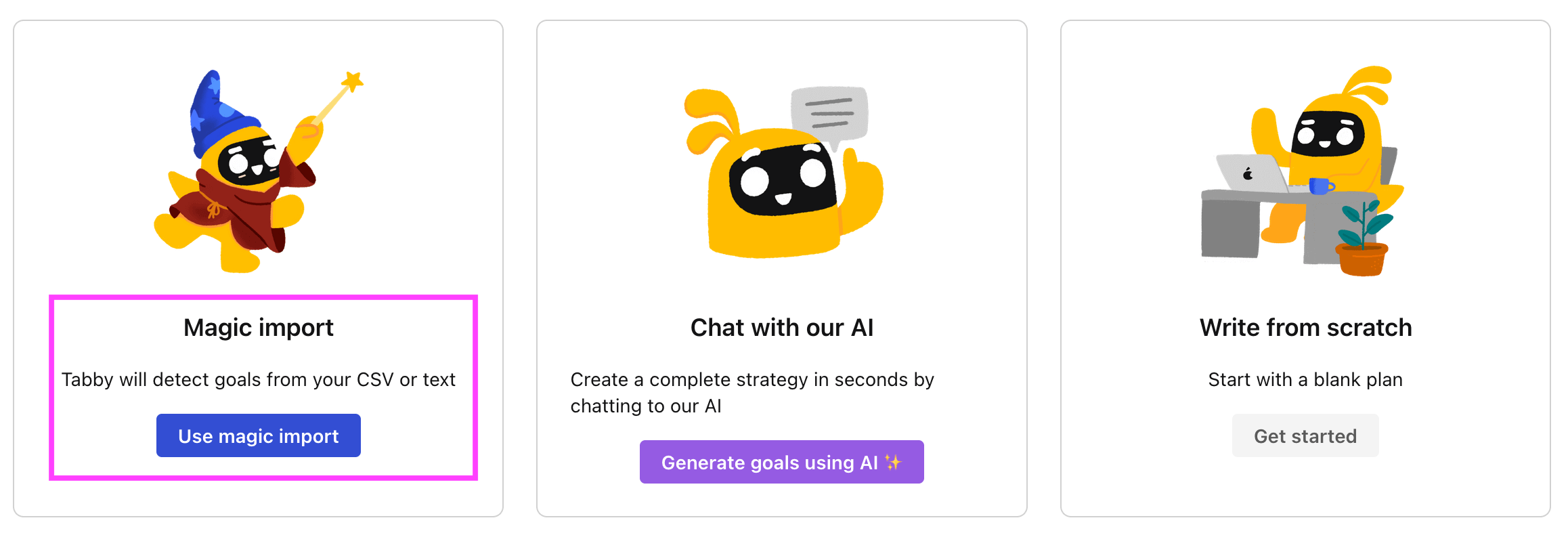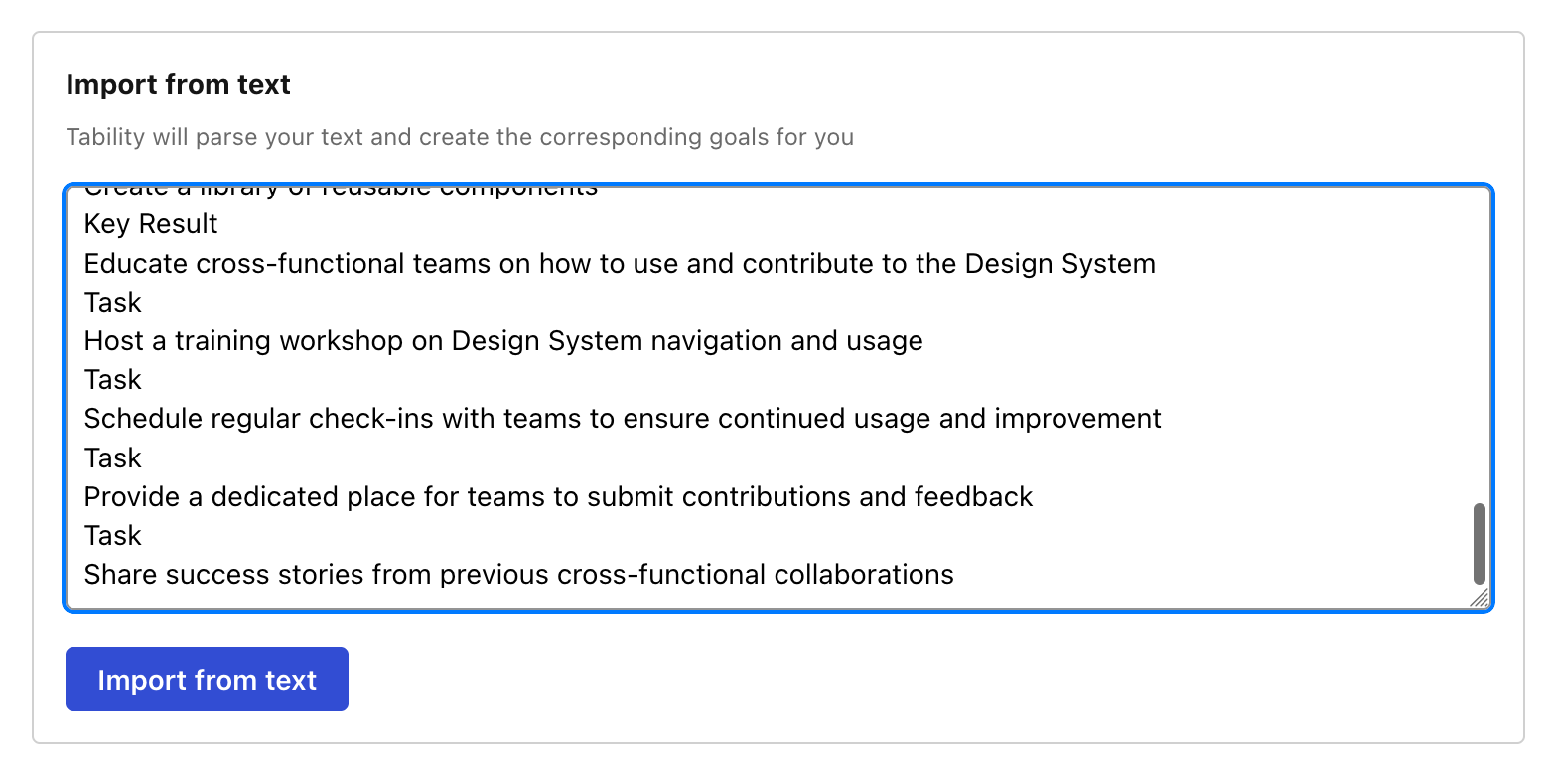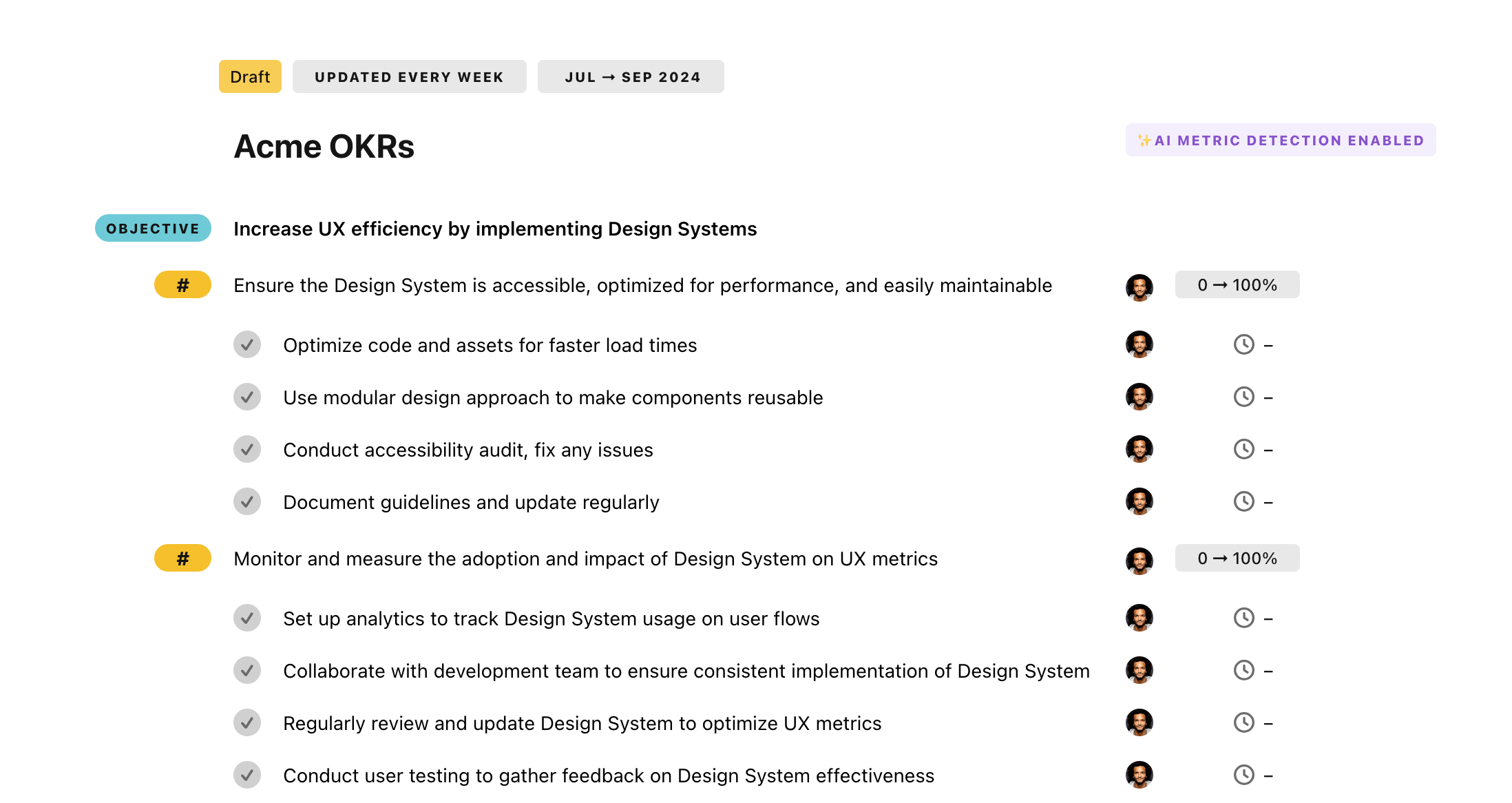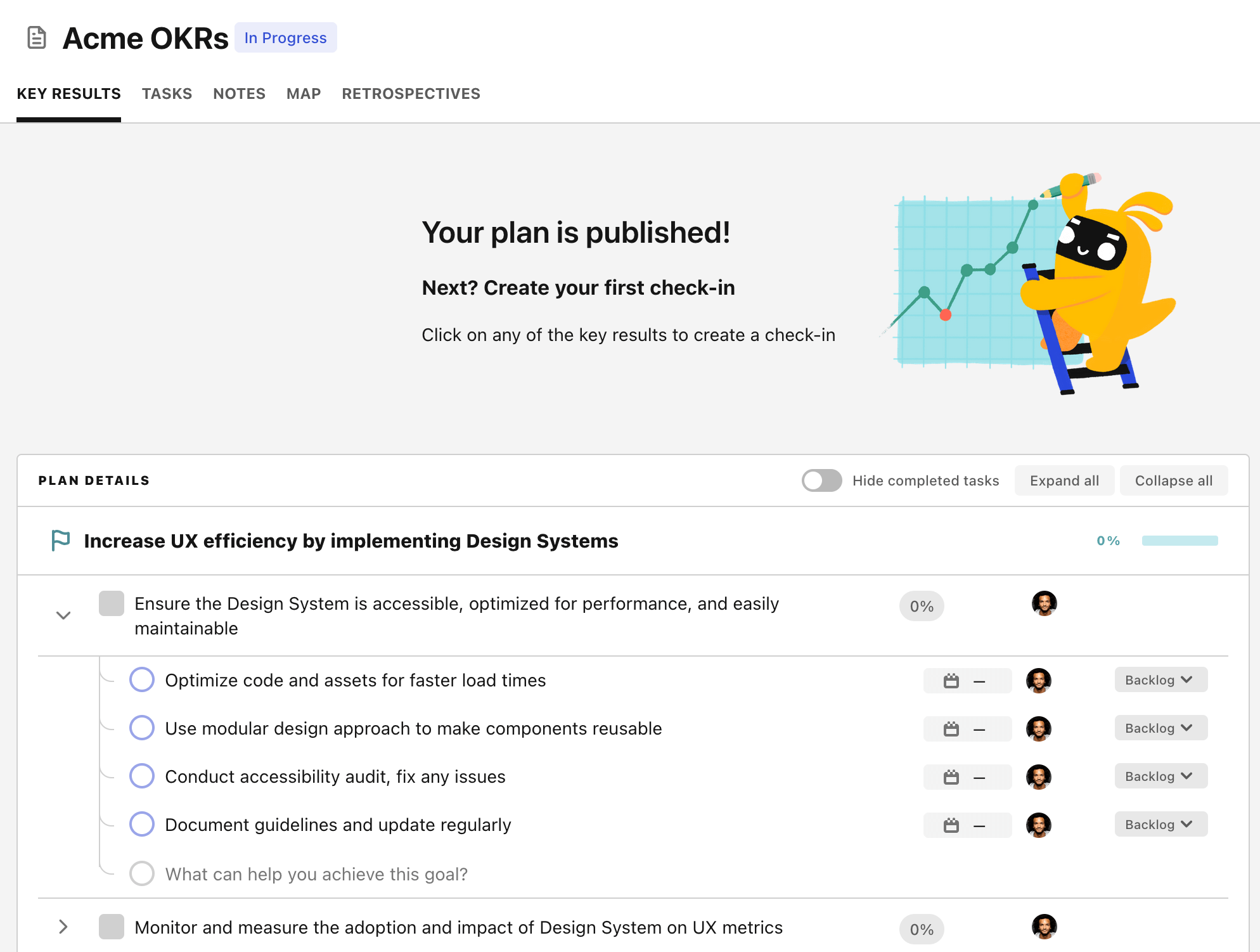OKR template to enhance efficiency of the fuel storage and filling terminal
Your OKR template
The second objective targets a 20% increase in daily fuel throughput. This will be achieved by investing in advanced throughput equipment and streamlining operational procedures. Current fuel processing efficiency will also be analyzed to identify bottlenecks and areas for improvement.
The third objective is the improvement of terminal safety protocol compliance to 100%. Even though the OKR doesn't outline any specific initiatives for this outcome, it implies making all terminal activities conform strictly to safety regulations and guidelines, possibly through enhanced staff training or implementing safety measures.
The overarching goal of this OKR is to strike an optimal balance between operational efficiency, service delivery and safety compliance in fuel storage and filling terminal operations, thereby ensuring a swift, adept, safe and profitable operation.
ObjectiveEnhance efficiency of the fuel storage and filling terminal
KRReduce loading/unloading time by 15%
Optimize truck routes to speed up turn-around time
Implement advanced scheduling for loading/unloading operations
Enhance workers' training for swift and efficient handling
KRIncrease daily fuel throughput by 20%
Invest in advanced throughput equipment
Implement streamlined operational procedures
Analyze current fuel processing efficiency
KRImprove terminal safety protocol compliance to 100%
How to edit and track OKRs with Tability
You'll probably want to edit the examples in this post, and Tability is the perfect tool for it.
Tability is an AI-powered platform that helps teams set better goals, monitor execution, and get help to achieve their objectives faster.
With Tability you can:
- Use AI to draft a complete set of OKRs in seconds
- Connect your OKRs and team goals to your project
- Automate reporting with integrations and built-in dashboard
Instead of having to copy the content of the OKR examples in a doc or spreadsheet, you can use Tability’s magic importer to start using any of the examples in this page.
The import process can be done in seconds, allowing you to edit OKRs directly in a platform that knows how to manage and track goals.
Step 1. Sign up for a free Tability account
Go tohttps://tability.app/signup and create your account (it's free!)
Step 2. Create a plan
Follow the steps after your onboarding to create your first plan, you should get to a page that looks like the picture below.

Step 3. Use the magic importer
Click on Use magic import to open up the Magic Import modal.
Now, go back to the OKR examples, and click on Copy on the example that you’d like to use.

Paste the content in the text import section. Don’t worry about the formatting, Tability’s AI will be able to parse it!

Now, just click on Import from text and let the magic happen.

Once your example is in the plan editor, you will be able to:
- Edit the objectives, key results, and tasks
- Click on the target 0 → 100% to set better target
- Use the tips and the AI to refine your goals
Step 4. Publish your plan
Once you’re done editing, you can publish your plan to switch to the goal-tracking mode.

From there you will have access to all the features that will help you and your team save hours with OKR reporting.
- 10+ built-in dashboards to visualise progress on your goals
- Weekly reminders, data connectors, and smart notifications
- 9 views to map OKRs to strategic projects
- Strategy map to align teams at scale